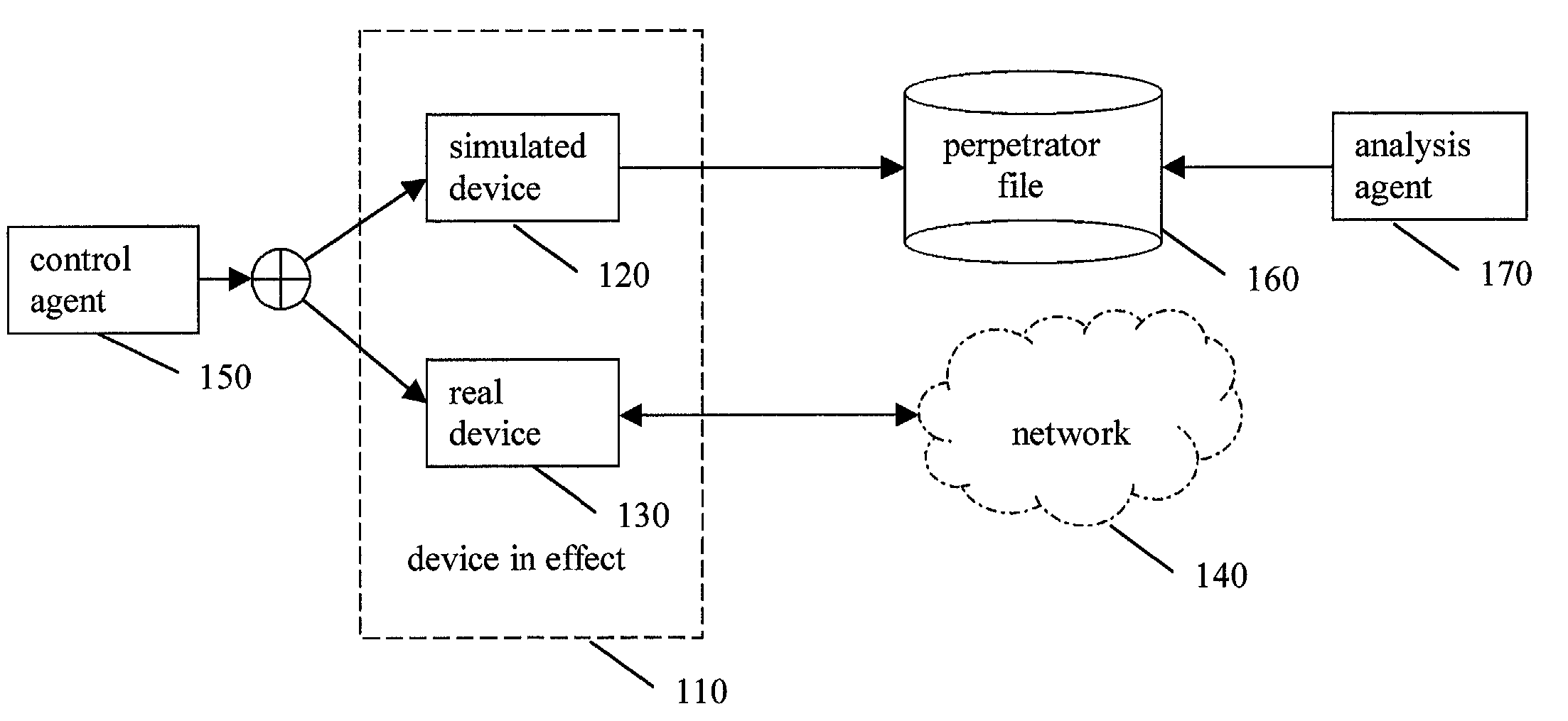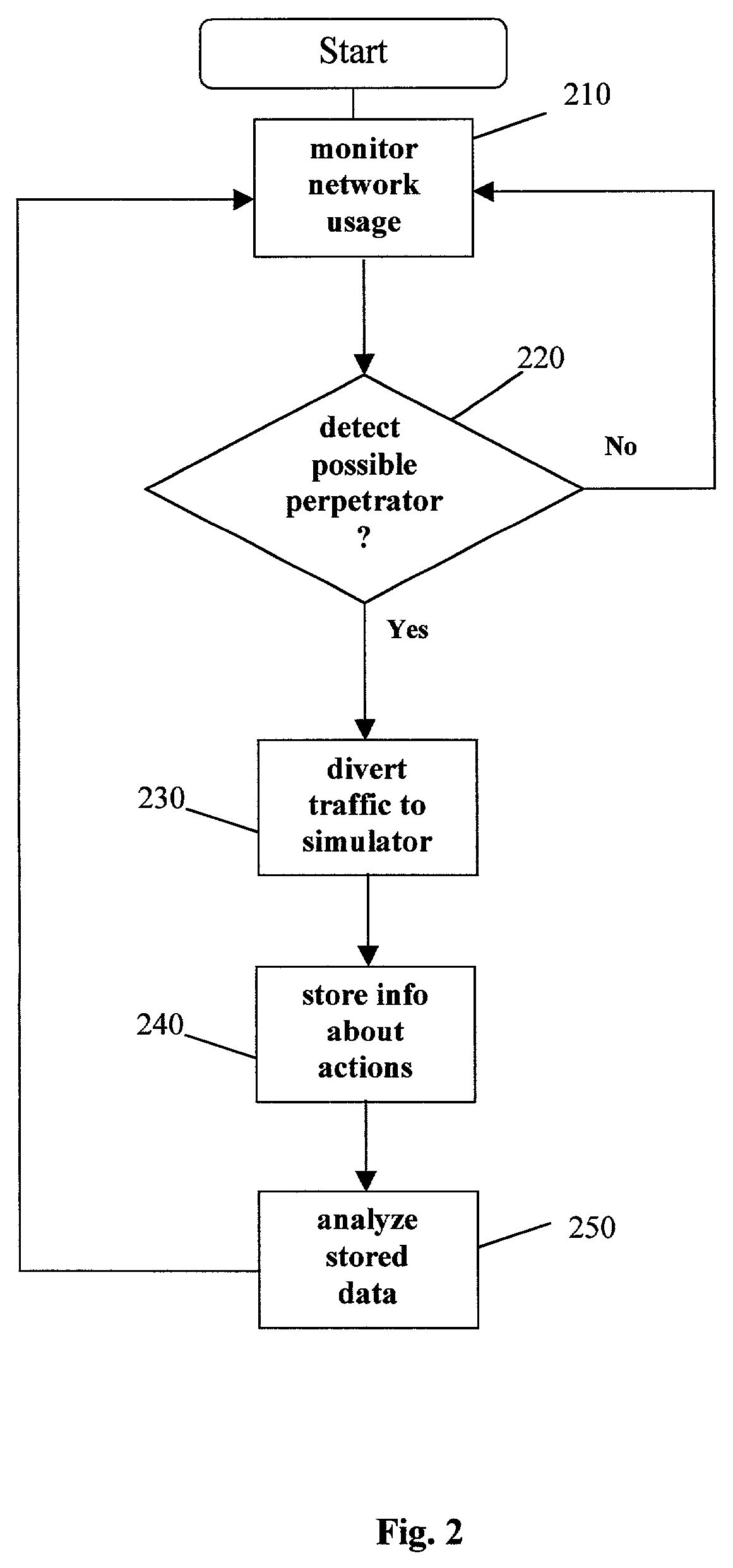Method and apparatus for security management via vicarious network devices
a network device and security management technology, applied in the field of network security, can solve the problems of preventing the perpetrator from later attacking the restarted device, disrupting the functioning of the network, and preventing the loss of data, so as to achieve reliable portrayal of the device and prevent data loss
- Summary
- Abstract
- Description
- Claims
- Application Information
AI Technical Summary
Benefits of technology
Problems solved by technology
Method used
Image
Examples
Embodiment Construction
[0032]In one embodiment of a method and apparatus for protecting data, voice, and video networks from individuals with malicious intent, a real network or device that resides on a network has a simulated (vicarious) counterpart that may take the place of the real device upon appropriate triggering. The simulated counterpart behaves like the real device or network, but records suspect transactions in a perpetrator file. The file may then be analyzed for purposes of exposing the perpetrator, discovering behavior patterns, and identifying security weaknesses of the network or device. The integrity of the real network or device is protected because the suspect is isolated from the real network and the suspect's transactions are not passed on to the actual device or network.
[0033]As previously discussed, the “hard” problems in security management are (i) protection from network device hacking and (ii) identification of the perpetrator. The present invention solves this problem by substit...
PUM
 Login to View More
Login to View More Abstract
Description
Claims
Application Information
 Login to View More
Login to View More - R&D
- Intellectual Property
- Life Sciences
- Materials
- Tech Scout
- Unparalleled Data Quality
- Higher Quality Content
- 60% Fewer Hallucinations
Browse by: Latest US Patents, China's latest patents, Technical Efficacy Thesaurus, Application Domain, Technology Topic, Popular Technical Reports.
© 2025 PatSnap. All rights reserved.Legal|Privacy policy|Modern Slavery Act Transparency Statement|Sitemap|About US| Contact US: help@patsnap.com



